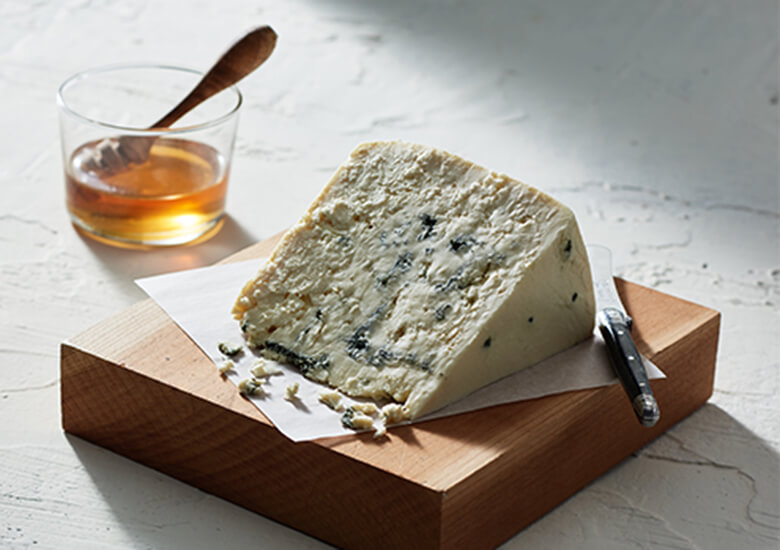Cheese is a delicious addition to any meal, but it can quickly spoil if not stored properly. One of the most frustrating issues for cheese lovers is mold. No one enjoys finding their favorite cheese covered in mold, so let’s dive into why cheese is so prone to mold, which types are most vulnerable, and, most importantly, how you can keep your cheese fresh and mold-free.
Understanding Why Cheese Molds So Easily

Cheese is made of milk, which contains proteins, fats, and water – a perfect combination for mold growth. The moisture in cheese creates an ideal environment for mold spores, and since most cheese is only lightly processed, it’s more susceptible to mold compared to other dairy products. Furthermore, cheese is porous, meaning it can easily absorb airborne mold spores if exposed to the air. All these factors combined make cheese an easy target for mold.
Identifying Cheese Types Most Susceptible to Mold
Not all cheeses are equally prone to mold. Soft cheeses with high moisture content, like ricotta, Brie, and mozzarella, are more vulnerable to mold compared to their hard counterparts. Here’s a quick breakdown:
- Soft and Fresh Cheeses: Soft cheeses, due to their high moisture, develop mold faster. They require vigilant storage and should be consumed relatively quickly after purchase.
- Semi-Soft and Washed-Rind Cheeses: Cheeses like Havarti and Gouda fall into this category. They have lower moisture than soft cheeses but still need careful handling.
- Hard Cheeses: Parmesan, aged cheddar, and Pecorino Romano have low moisture levels and are more resilient to mold. However, they are still susceptible over time, especially if exposed to air.
Proper Storage Techniques to Prevent Mold
The secret to keeping cheese fresh and mold-free lies in how you store it. The refrigerator’s cold temperature can slow mold growth, but without the right conditions, mold can still find its way onto your cheese. Here are the best storage practices:
- Use the Right Wrap: Wrap your cheese in wax or parchment paper instead of plastic wrap. This allows the cheese to “breathe” without trapping moisture, which can encourage mold.
- Double Wrap for Extra Protection: After the wax paper layer, add a loose wrap of foil or plastic wrap. This extra layer provides a buffer against excess air but keeps the cheese from being sealed too tightly.
- Store in the Vegetable Crisper: The crisper drawer in your refrigerator is usually the most stable in temperature and humidity, which is perfect for storing cheese.
Choosing the Best Wrapping Material for Cheese
One of the most overlooked aspects of cheese storage is the wrapping material. Each type of cheese benefits from different wrapping methods:
- Wax or Cheese Paper: This is ideal for most cheeses, allowing them to breathe while keeping mold at bay.
- Plastic Wrap: Although convenient, plastic wrap isn’t ideal for long-term storage because it traps moisture, which leads to faster mold growth. Use plastic wrap only for a temporary solution or for hard cheeses.
- Vacuum Sealing for Hard Cheeses: Vacuum sealing can extend the shelf life of hard cheeses significantly since it eliminates air exposure, a primary cause of mold growth. Just make sure to rewrap cheese after each use to maintain its quality.
Optimal Temperature and Humidity for Mold-Free Cheese

Cheese storage isn’t as simple as just keeping it cold. Temperature and humidity play a big role in mold prevention:
- Keep It Cool but Not Frozen: Cheese should ideally be stored between 35°F and 45°F (2°C and 7°C). Storing it too cold can cause dryness and texture damage, especially in soft cheeses, while warmer temperatures encourage mold growth.
- Humidity Matters: The right balance of humidity is crucial. Too much humidity fosters mold, while too little dries out the cheese. Special cheese storage containers are available, but if you don’t have one, the vegetable crisper drawer is the next best option.
Tips to Extend Your Cheese’s Shelf Life
The key to a longer-lasting cheese stash is minimizing its exposure to mold and bacteria. Here’s how:
- Buy Small Quantities: Buying only as much cheese as you can consume in a short period helps prevent mold from having the chance to develop.
- Handle with Clean Utensils: Every time you cut or handle cheese, use clean knives and cutting boards. Contamination can introduce mold spores, speeding up spoilage.
- Regularly Check for Spoilage: Inspect your cheese often. If you notice an unusual texture, color, or smell, it might be time to discard it. Address early signs of mold by rewrapping cheese or even freezing it if you don’t plan to use it soon. Keep in mind that freezing changes the texture, so it’s best for cheeses used in cooking rather than for snacking.
Preventive Tips for Homemade Cheese

For those who enjoy making cheese at home, keeping the process clean and controlled is crucial for mold-free results:
- Sanitize All Equipment: Mold spores can come from surfaces or equipment. Ensure everything is thoroughly sanitized before starting the cheesemaking process.
- Control the Environment: Temperature and humidity play a big role in homemade cheese, just as they do in storage. Use cheese paper or wax coating during aging to protect it from mold.
- Turn Cheese Regularly: If your cheese is aging, turning it regularly prevents moist spots from developing, where mold might settle in.
What to Do If Mold Appears on Your Cheese Anyway
Sometimes, despite all efforts, mold may still make an appearance. When that happens, here’s what to do:
- Hard Cheeses: With hard or semi-hard cheeses like cheddar, gouda, or Parmesan, it’s generally safe to cut off the moldy area. Remove at least an inch around and below the mold to ensure you’re getting all of it.
- Soft Cheeses: For soft cheeses like Brie or cream cheese, discard them if you find mold. Their high moisture content allows mold to spread quickly, making it difficult to remove safely.
Inspect your cheese regularly and, when in doubt, err on the side of caution and discard cheese with questionable mold. While some mold is safe, the potential for harmful bacteria is high in mold-covered cheese.
Conclusion
Mold on cheese is common but not inevitable. By understanding the types of cheese most prone to mold, mastering storage techniques, using the right wrapping materials, and managing temperature and humidity, you can keep your cheese fresher for longer. A bit of careful planning and the right storage practices will ensure you enjoy every bite of your favorite cheeses without unwanted mold surprises. So next time you bring home a block of cheddar or a wheel of Brie, you’ll know exactly how to keep it fresh and delicious!


